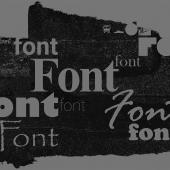Original artwork by Bussolati.com
Cheat Sheet
- Medium matters. The speed of social media is double-edged; infringement may be noticed immediately, but it’s also easy to delete a post.
- Copyright clearance. Consider who owns the copyright in the work, the type of work, and whether it incorporates third-party materials.
- Trademark clearance. Identify all trademarks used in the work, including word marks, service marks, and any other distinctive name.
- Celebrity clearance. Any evocation of the likeness of a celebrity — a look-alike, a drawing, even just an illustration — communicating a person’s identity or persona may violate publicity rights.
“It depends.”
These are the two most dreaded words a client can hear from a lawyer, especially when creating and reviewing advertising material to clear intellectual property legal risks. From the lawyer’s perspective, “it depends” is a perfectly reasonable response. Plaintiffs’ lawyers are creative. IP rights-owners can assert legal claims on aggressive, questionable, and even flimsy, grounds.
However, from the marketer’s perspective, “it depends” does not provide any advice, guidance, or assistance. Marketers understand that we live in a litigious society, but nothing is without risk. Without catchy, edgy, or even risky advertising, marketing campaigns will fail to generate revenue. And without that revenue, the risk-mitigation process may be for naught.
Risk mitigation is part of the creative process
That does not mean companies can skip the legal review process altogether. Legal IP risk mitigation plays an integral part in the creative process not only because advertising can drive revenue, but also because third-party lawsuits over the use of infringing materials in advertisements can have their own deleterious impact. Crucially, marketers should seek to mitigate risk during the creation and launch of any advertising collateral to decrease the likelihood of third-party claims.
Claims could be premised on infringements of copyright, trademark, personal, and other IP rights of third parties. The rights clearance process includes:
- Identifying rights and issues within works as a whole, as well as individual elements of the work;
- Determining whether a third party owns identified protectable rights; and
- For any rights owned by a third party (not the client),
- Evaluating whether permission is required for the intended use and
- If so, obtaining a license or other permission from the third-party owner.

ACC Resource Library, “Initial Licensing / Permission Question Checklist”
The medium matters
Social media provides easy infringement but also easy fixes
The advertising medium plays an important role in evaluating legal risks. Although marketing teams are increasingly unlikely to assume that copying and pasting content is free and legal if it is merely posted on the internet, the internet — and social media in particular — remains an ever-present risk as traditional IP laws still apply.
Social media users can sometimes spot infringing content in minutes, while spotting the same issue in traditional advertising might have taken weeks or months. But this instantaneous recognition is the other side of the similarly easy ability to take down offending posts to mitigate potential damages.

On social media, before re-posting or sharing the posts of others, check the platform’s rules to consider whether it is appropriate or implicates legal risks.
Social media has increased the ease of celebrity endorsements, and their risks
Social media does have its own concerns, though. It is far easier to interact with and call out celebrities on social media to try to bring attention to the brand, which can bring heightened legal risks via a state-level claim of a right of publicity.
While memes and hashtags may not have existed prior to social media, expert and celebrity endorsements did. The rise of social media influencers has exploded, and they should be viewed through a similar legal risk analysis as experts and celebrity endorsers.

ACC Resource Library, “10 Tips for Public Companies using Social Media”
Understand potential legal claims
It is useful when going through the legal IP clearance process to understand the potential legal claims that could be asserted. When reviewing proposed advertising collateral, think in very distinct terms, specifically:
- What is the legal claim that could be asserted in a lawsuit based on this proposed advertisement?
- And what are the defenses?
The marketing team may have a vague notion that an advertisement poses risks, but that is not enough; the legal department should review and think through the specific legal basis for a potential claim and the defenses to that claim.
It is also important to maintain files, such as an electronic file folder containing written records of the licenses and permissions secured (e.g., written license agreement, online terms and conditions, model release). The folder should also include the scope and duration of each license, along with license restrictions, and the legal basis for concluding that a license was not required for a particular element.

Be careful interacting with, re-posting, or sharing a celebrity’s content, and consider the context. If the purpose is to draw attention to the celebrity’s post that e.g. mentions a charitable cause, the risks are likely low. If the purpose is to draw attention to the brand by using the celebrity’s interaction, the risks are likely higher.
Copyright clearance
When reviewing proposed advertisements or marketing collateral, consider the potential protectable copyright elements for the work in its entirety, as well as each potentially copyrightable element. Consider who owns the copyright in the work, the type of work, and whether it incorporates third-party materials. Works owned by third parties usually require a license, but in some situations, it may not be necessary.
For example, if the work is in the public domain due to expiration of the copyright or if it is a US government work, copyright protection does not apply. Additionally, the proposed use may qualify as a fair use, but it is more difficult to use that defense for commercial advertisements because they benefit from a lower standard of First Amendment protection than editorial works.
For third-party photos, illustrations, or other visual works, identify any stock photography, clip art, and any other commercially-oriented third-party works; this is important because owners are motivated to protect such work, as much of it was created solely to generate revenue for their owners. Make sure to identify any incorporated trademarks, artwork protected by copyright, images of identifiable people, and identifiable locations such as buildings or monuments. Failure to license these rights leads to significant legal risk.

Stock photo licenses and other similar terms and conditions are not all the same. Simply because you have a license does not mean you have a license for all potential commercial uses.
Do this: Create a checklist
We recommend that in-house counsel set up a checklist or process for themselves or their clients to follow.
These checklists or processes can be developed and based on the type of advertising or marketing materials that are being reviewed for clearance, whether print, social media, or audiovisual. Checklists should be customized to meet the client’s specific concerns, such as if the marketing team routinely creates hybrid collateral.
For example, the marketing team may be creating a flyer to go out in the mail for a promotion. That flyer may have a combination of stock images obtained from a commercial library, photos the marketing team has taken to support the promotion, and manipulations of the stock image with marketing’s in-house image, creating the “hybrid image.”
Stock images
For stock images, the origin for each image needs identification, go to the source, and review that image’s terms for usage. Many times, people have the mistaken impression that because they can use something off the internet for their personal use, it must be OK for commercial use. Many image libraries permit personal use but prohibit commercial use without paying a licensing fee — or any permutation of usage rights. For example, terms of service may allow you to use the image for any amount of digital reproduction but limit you to 500,000 reproductions for the physical reproduction, e.g., product packaging and labeling, advertising in magazines and other tangible media, and other commercial uses.
In-house images
Iimages developed in-house are generally developed during the course of employment; thus, as long as proper assignment documents are in place, the company owns those images. There should be copyright assignment documents to the effect that any photos taken by marketing personnel for the purpose of creating marketing materials are automatically assigned to the company. Most people assume that since the work was generated on company time, the statutory work-for-hire framework applies. That is not so. There are just nine enumerated categories and most of the works that an in-house marketing department would create – brochures, website, labels, flyers, or other collateral – would not fall under one of the enumerated categories.
Hybrid images
Hybrid images can be especially tricky. These are usually blends using a stock image for a background, and a marketing department image in the foreground. The marketing department image overlies the stock image using image manipulation software to do the creative blending to achieve the desired effect. To be on the safe side, the analysis should be the same as with any plain stock image use: analyze the library’s terms of service.
Hidden considerations, like tattoos (seriously)
Other important considerations are so-called “hidden” copyright concerns. For example, when retaining a celebrity or athlete to appear in print advertising or in a video game, does the celebrity have identifiable tattoos on their body? Has the celebrity or athlete obtained a release from the tattoo artist for the work on their body to appear in commercial advertising or in the video game? A print advertisement may zoom in and focus on the tattoo. The video game maker may want the game to look as true to life as possible and include the exact tattoo in the game itself. To address these legal risks, consider including a specific indemnity by the celebrity or athlete in the contract to protect the company against a copyright infringement claim by the tattoo artist.
Music
Music is another area for which careful clearance is required. The copyright ownership and issues around music generally are extremely complex, and IP owners of music rights are often aggressive in seeking compensation for the use of copyrighted musical works.
Two copyrights: the composition and the master
Every piece of music that you hear has two copyrights attached to it. The first copyright is the “composition,” and the second is the “master.” The composition copyright protects the musical work itself, that is, the words, harmony, melody, chord changes, and other elements included on a sheet of music or words in a notebook. The master protects the particular expression of the composition that is recorded and produced by the artist recording the composition.
Think of the music you are listening to in your car or through your earbuds. In the most basic scenario, the composition and master belong to the same person. An artist wrote a song and recorded that song from scratch and the artist paid out of pocket for everything to make the recording. Most of the time, the two copyrights are owned by different people. For example, an artist writes a song and a record company pays the recording studio and other people to record the artist’s song with the artist. Now the artist owns the composition copyright, but the record company owns the master.
Listening to music? There’s a license there…
All use of copyrighted music, whether reproduction, distribution, public performance, or sync (i.e., multimedia content that synchronizes new content, such as a video, with third-party content, such as music) has to do with licensing. Every time you hear music, a licensing deal is behind it. Streaming service companies negotiate music licenses with record labels and publishers so that they can stream the music you are listening to. Terrestrial radio stations need a blanket license from a Performance Rights Organization (PRO) such as ASCAP or BMI to legally play music. The same is true for TV channels, clubs and bars, restaurants, shops, your gym — every business that uses music to its benefit needs to get some sort of a license. Given that playing music in a physical space such as a restaurant, bar, or gym, enhances the customer’s experience in that space, the music should be paid for. However, all of these licenses are not directed to a particular piece of music, they are blanket licenses that allow the licensee (streaming company, radio station, bar, club, gym) to play music under the control of the PRO or record label or publisher.

Take care when licensing music as the area is highly complex and difficult to navigate in the commercial advertising context.
Syncing music and video
When you want to use a particular piece of music with a piece of visual content that you are creating, you need to get a sync license which permits the synchronization of that piece of music to any other type of content, such as visual content in a commercial. This sync license is further subdivided into two parts — synchronization licensing on the composition and master use licensing on the sound recording.
Now let’s create a Super Bowl ad!
For example, imagine creating a Super Bowl commercial. You have 30 seconds of visual content created for your product or service you want to sell. You wrote the million-dollar check to the NFL to have your commercial played during the game. Now you need the music. You want the latest no.1 song on the charts done by a “triple-A” artist. How are you going to get it?
You must acquire the two sync licenses, which are likely with two different entities. This includes the synchronization license from the publisher/songwriter that will allow you to use the original composition of the music. It also requires the master use license from the record label/recording artist, in this example, the “triple A” artist, to allow you to synchronize the sound recording to your commercial.
Let’s say “triple A” artist wants a million dollars for his or her recording of the song to be played along with your commercial. You can’t afford it. What do you do? Recall the sync license is really two separate licenses — synchronization for the original composition of the music and master use license for the recording of the music that was done by “triple A” artist. “Triple A” artist only holds the master use license. So you can pay the publisher/songwriter for synchronization for the original composition of the music and hire a cover band to record it. Many companies will opt to forego getting the master use license and just get the synchronization license for the composition and hire someone to record the composition.
Many companies will opt to forego getting the master use license and just get the synchronization license for the composition and hire someone to record the composition.
Trademark clearance
With trademarks, when reviewing proposed advertising collateral, identify all trademarks used in the work, including word marks, service marks, and any other distinctive name. Additionally, it is also important to identify slogans, taglines, product images, distinctive product or packaging shapes or colors, architectural works, business names, and any other indicators of ownership. Another step is to evaluate whether a license or other permission is needed based on the type of work and any potential defenses, such as fair use. Remember, as part of the risk evaluation process, fair use is only a defense to an infringement claim — that means that an infringement has taken place! The question is whether the infringement is defensible or permitted without obtaining an express license.
In the trademark context, the fair use defense includes nominative fair use, use in a descriptive, non-trademark, manner, and use for comparative advertising purposes not likely to cause consumer confusion or dilution of the trademark. With comparative advertising, consider how the third-party mark appears — using the third-party owner’s trademark is often a different risk analysis than merely referencing the product by name. The thought process should be to only use as much of the third-party mark or name as is necessary to inform the reader or viewer of the comparison. Lastly, the third-party mark should not be used in a way that suggests a false association, suggests any endorsement by the third party, creates confusion, or disparages or tarnishes the third-party mark.

Search and clear trademarks before use; file trademark applications before launching a new product, if possible.
In-house reviewers should lookout for marks that may be included in the background of images. Background usage may be capturing a physical place of business or graffiti when including photos of a person walking down the street. That person may also feature “background” marks on their clothes or other item they are wearing. Even if the team has secured rights from the copyright holder, they may not have authorization from the mark owner. Such background usages can be easily remedied by obscuring the mark.
Practically speaking, many mark owners, such as Microsoft, offer suggestions on how to use their marks and brand assets. If the owner of the mark your team is seeking to use does not publish such guidelines, those guidelines published by similarly situated companies can offer suggestions on the sensitivities and standard of practice for owners of marks in that field. Furthermore, if your company has such guidelines, you should ensure that the standard you set for others is aligned with the standard you want to apply to your use. Absent an affirmative guidance from the mark owner, how your company views trademarks may be factored into any assessment of your use of other people’s marks.
When analyzing risk, put yourself in the shoes of the mark owner. If your client was the owner of the mark, is the mark used in such a way that you would spend time, effort, and dollars to challenge it? This analysis is informed by:
- The prominence of the mark,
- The value of the market in which the mark exists,
- Past litigation by the owner, and
- The manner in which the mark is being used.
A final practice tip is to challenge the team to provide an example of the advertisement that omits the mark. If they can provide that quickly or without much pushback, then you can infer the use of the mark was not integral to the message and could be omitted without substantial impact. However, if the team resists or cannot fathom an alternative, you can infer the use is important and weight the level of analysis and review spend accordingly.
Personal rights clearance (celebrity or recognizable person)
The right of publicity is a state-derived legal protection, giving individuals the inherent right to control the economic interest in and commercial use of their identity and persona. A majority of states extend this right to everyone, not just celebrities. The right is a property right, and thus its infringement is a commercial tort of unfair competition. In the context of IP rights clearances, the right of publicity prohibits the unconsented use of one’s identity to draw attention to a product or advertisement. A prima facie claim requires pleading that the plaintiff owns an enforceable right in its identity, and that the defendant’s commercial use is likely to cause damage to the commercial value of the identity. The use of celebrity look-alikes has long been restricted by the right of publicity, as the key is not that the celebrity’s actual image is used, but rather that the celebrity’s identity or persona is evoked in advertising without permission. Indeed, any evocation of the likeness of a celebrity — a look-alike, a drawing, even just an illustration — communicating a person’s identity or persona may violate publicity rights.
Any evocation of the likeness of a celebrity — a look-alike, a drawing, even just an illustration — communicating a person’s identity or persona may violate publicity rights.
For persons whose identity is included or evoked by a proposed advertisement, determine whether the use requires permission based on, among other things, how identifiable the person is (e.g., if the photo is a close-up or a crowd shot from a distance). Furthermore, it is well-established that fictitious characters may evoke the identity of a real person. Additionally, a right of publicity may be implicated by characteristics or traits that a person or celebrity is associated with, such as look-alikes, recognizable voice, uniform, or even distinctive gestures or mannerisms.
Any reference to a celebrity from a company’s social media account arguably has a commercial purpose. Evoking a celebrity from that account likely will be viewed within a commercial context, even if the reference is subtle, as trying to connect the celebrity’s fame with the company. Accordingly, social media policies should urge caution in referencing third parties through the company’s social media accounts.
Disclaimer: The information in any resource in this website should not be construed as legal advice or as a legal opinion on specific facts, and should not be considered representing the views of its authors, its sponsors, and/or ACC. These resources are not intended as a definitive statement on the subject addressed. Rather, they are intended to serve as a tool providing practical guidance and references for the busy in-house practitioner and other readers.






